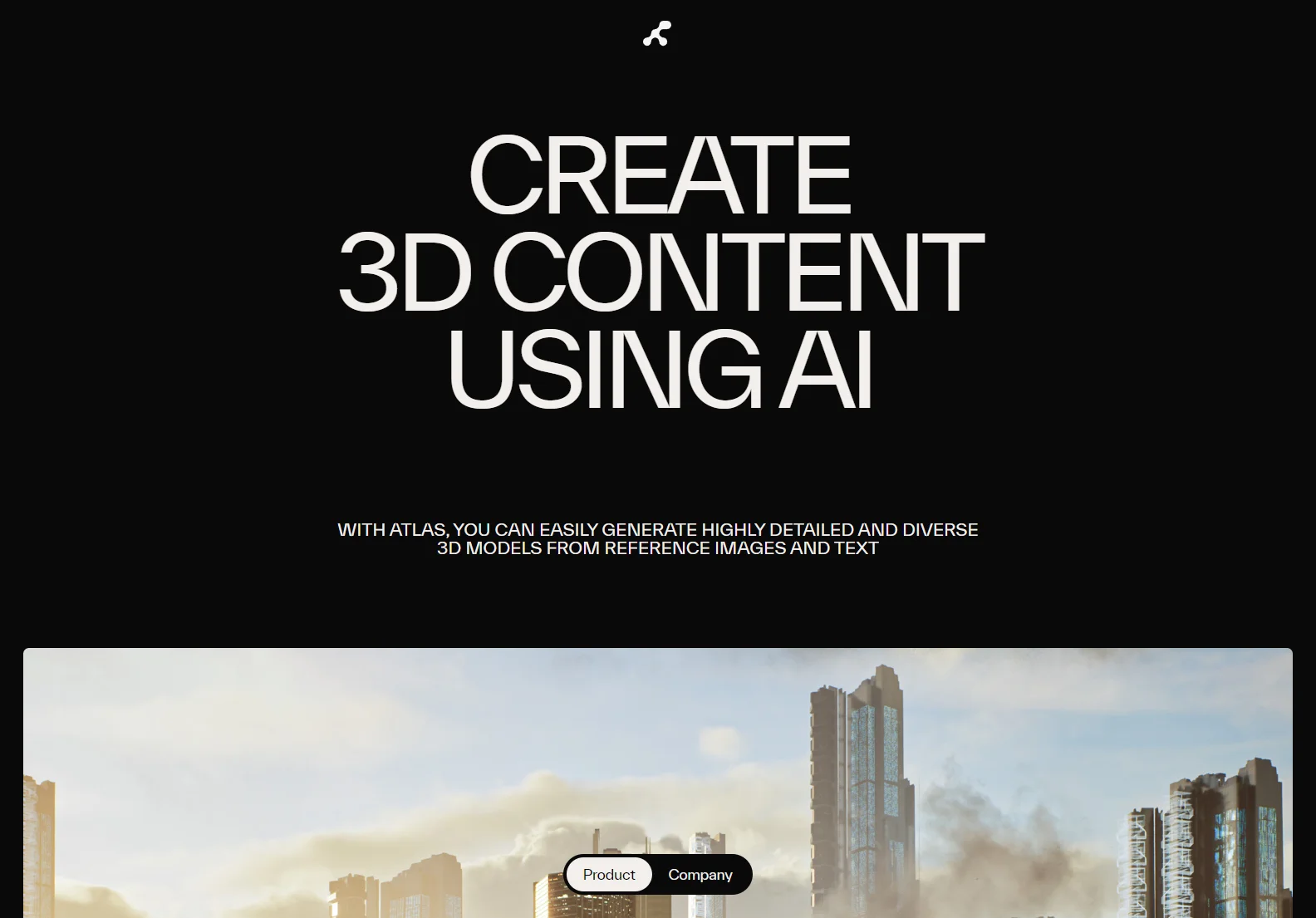Atlas: Revolutionizing 3D Content Creation with AI
Atlas is an AI-powered platform that's transforming the way 3D content is created. It allows users to generate highly detailed and diverse 3D models from simple text prompts or reference images, significantly accelerating workflows and boosting creative output. This article delves into Atlas's capabilities, benefits, and impact on various industries.
Key Features and Capabilities
- Speed and Efficiency: Atlas boasts unparalleled speed, generating assets in mere seconds. This dramatic increase in efficiency has been shown to improve workflows by as much as 200x, freeing up creators to focus on the artistic aspects of their projects.
- Text-to-3D Generation: Users can input text descriptions to generate 3D models, opening up possibilities for rapid prototyping and creative exploration. The AI understands nuanced descriptions, resulting in accurate and detailed outputs.
- Image-to-3D Conversion: Atlas can also convert reference images into 3D models, providing a quick and easy way to create assets from existing visual resources. This feature is particularly useful for recreating existing objects or environments in 3D.
- High-Quality Output: The generated 3D models are characterized by their high level of detail and realism, suitable for a wide range of applications, from video games and virtual reality experiences to architectural visualizations and product design.
- Integration with Major Engines: Atlas seamlessly integrates with popular game engines and 3D software, ensuring a smooth and non-destructive workflow for creators. This interoperability eliminates the need for complex conversion processes.
Use Cases and Industries
Atlas's versatility makes it applicable across numerous sectors:
- Game Development: Streamlines asset creation, reducing development time and costs. Its text-to-3D capabilities are particularly beneficial for creating unique and diverse game environments and characters.
- Architecture and Design: Facilitates the rapid creation of 3D models for architectural visualizations, product design, and urban planning. The ability to generate models from images is invaluable for recreating existing structures or objects.
- Film and Animation: Provides a powerful tool for creating realistic 3D models for visual effects, animation, and virtual production. The speed and efficiency of Atlas allow for rapid iteration and experimentation.
- Web3 and Metaverse: Empowers creators to build immersive and engaging experiences for the metaverse, generating assets for virtual worlds and interactive environments.
Testimonials
Atlas has received positive feedback from industry leaders:
- Hideaki Uehara (Square Enix): Praised Atlas's unique technology and its potential to unlock efficiencies in game development.
- Mark Long (Neon): Highlighted Atlas's advanced text-to-3D capabilities and its significant advantage for user-generated content (UGC) games.
- Brooks Brown (Consortium 9): Emphasized Atlas's ability to handle large-scale projects, such as rebuilding entire game cities with thousands of unique buildings.
Conclusion
Atlas represents a significant advancement in 3D content creation, offering a powerful and efficient solution for professionals and hobbyists alike. Its speed, versatility, and high-quality output are transforming workflows across various industries, making it a valuable tool for anyone working with 3D models.

